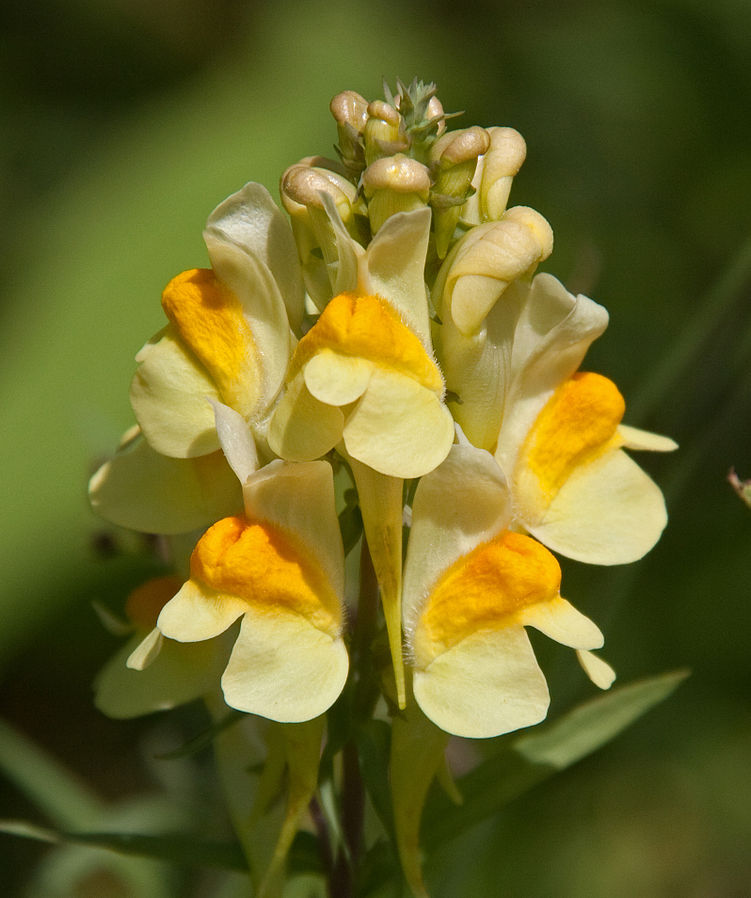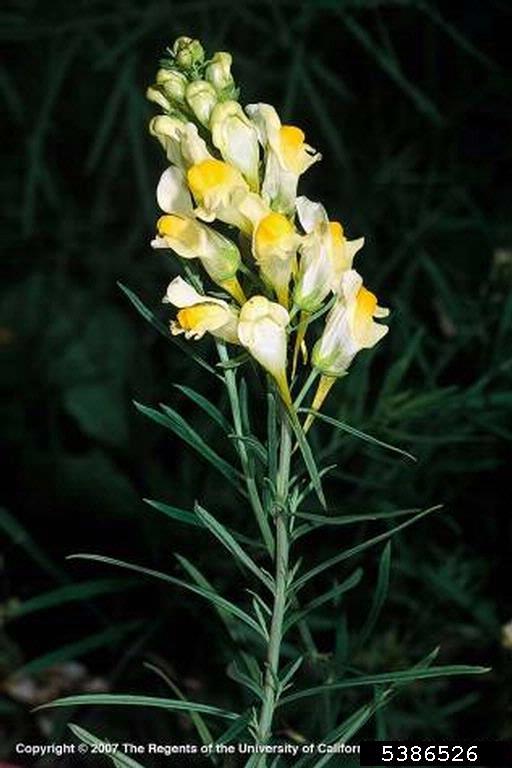Yellow Toadflax

Yellow Toadflax
(Linaria vulgaris)
Priority: - Established / Strategic Control
Tags: Terrestrial
Identification and Reproduction
Identification:
- Yellow toadflax (also called Butter and Eggs) is a herbaceous perennial.
- Its stems are light green and grow upto 1 m tall. Stems are unbranched and grow upright.
- Leaves are alterate in pattern on the upper stem but may be oppositely arranged on the lower stem due to over crowding. Leaves are pale light green and lance-shaped.
- Flowers grow in a spike-like cluster with oval-shaped seed capsules.

- Since flowers are snapdragon-like they have a two-tone colour; orange on the throat and the remaining portion yellow.
- The seeds are black or brown, flat, and with papery wings.
Reproduction:
- Reproduces primarily vegetatively through their creeping roots.
- It is able to produce new sprouts from its roots at just 2-3 weeks old.
- Can vegetatively reproduce from both the tap root and lateral roots.
- It is a prolific seed producer where seeds live up to 10 years. Fortunately, germination rates are relatively low.
Habitat & Ecology
- Prefers sandy soils but often invades fields, grasslands, roadsides as well as open forests.
- Very drought tolerant and can withstand low water availability.
Impacts
Social:
- Unpalatable to livestock.
- Often invades pastures and grazing fields.
Ecological:
- Yellow toadflax displaces native forage plants.
- Competes and displaces native wildflowers and grasses.
Management
Mechanical/Manual Control:
- Small patches or individual plants can easily be hand-pulled in soft soils. Ensure entire root masses are removed.
- Ensure that all root fragments are collected to prevent regrowth.
- Avoiding mowing or burning as this will encourage growth.
Chemical Control:
- A combination of mechanical and chemical measures will be the most effective.
- Application is best applied prior to flowering.
- Repeated applications will be necessary to effectively kill off infestations, a minimum of 3 years.
Biological Control:
- Several biological agents are being researched. Currently a stem mining weevil has proven successful.
For alternative planting options to yellow toadflax, check out the ISCBC's Grow Me Instead guide.
Resources
Download the Alberta Invasive Species Council's brochure on Yellow Toadflax here.
Check out this video made by the Montana Department of Agriculture to help identify the yellow toadflax.
For more information, check out the USDA's report on the ecology and management of both dalmatian and yellow toadflax here.
View header photo here.



